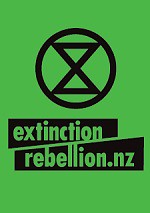Two weeks ago the government released a strapped chicken report from the NZIER purporting to show that action on climate change was too expensive. The report was notable for ignoring our biggest source of emissions reductions, forestry, despite noting evidence from MAF that a carbon price of $20 per ton (a fifth of what they were projecting) could induce up to 100,000 hectares per year of new planting.
I was interested in this estimate, so I dug into it with the OIA. It comes from a briefing note from MAF titled New Forest Planting and harvesting Intentions under High Carbon prices [PDF], which summarises the results of two MAF-funded research projects, one by the University of Canterbury School of Forestry and the other by Scion. Both reports reached similar conclusions: that putting a price on carbon enormously increases the profitability of forestry, resulting in more tree planting and longer rotations, even when carbon prices are expected to rise. MAF has found it difficult to predict planting rates in the past (mainly because its an exercise in predicting commodity prices), but a low carbon price of $20 /ton would push forestry rates of return above the 10%, which they expect to push planting rates back to the 90's peak of 100,000 hectares a year (higher carbon prices are unlikely to produce much planting beyond this due to resource constraints). This in turn would have a significant effect on our net position between 2018 and 2030, and an even larger one in 2050, when the government is supposed to meet its lax 50% reduction target.
But there's a sticking point: their past work has led MAF to believe that farmers are not economically rational actors about land-use decisions and that their decisions are "suboptimal". In addition, there are uncertainties around the future value of credits and whether there will be a market for them at all (something which will only have been heightened by the government's wobbling on climate change and its talk of price caps and closed markets), as well as a general lack of information on (and proven examples of) the costs and benefits of carbon trading. Which together adds up to market failure. Solving this market failure is the key to reducing our emissions in the short-term.
So how do we do it? One part - providing information on costs and benefits - is easy enough, and bread and butter for government departments. The core problem is the uncertainty. And that uncertainty is entirely political in nature. If the government wants to reduce it, they need to stop pandering to the deniers and the do-nothings and commit clearly and unequivocally to implementing the ETS and retaining it regardless of whether there is any international agreement. They also need to commit to an open carbon market, so forest-owners can command high prices offshore, rather than trying to keep carbon prices artificially low by locking that credit within New Zealand. But sadly, that might just be too much to expect from National.





